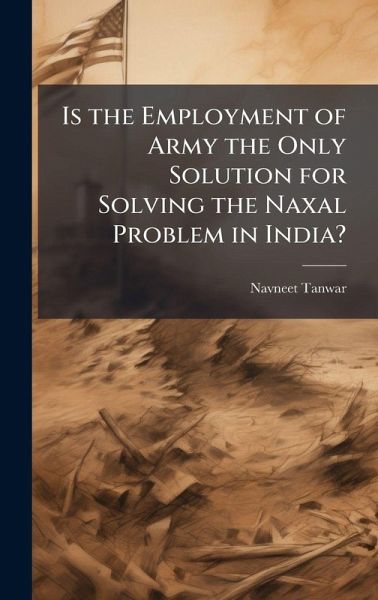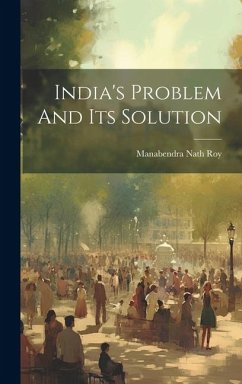
Is the Employment of Army the Only Solution for Solving the Naxal Problem in India?
Versandkostenfrei!
Versandfertig in über 4 Wochen
28,99 €
inkl. MwSt.
Weitere Ausgaben:

PAYBACK Punkte
14 °P sammeln!
The monograph provides an in-depth analysis of the structural and ideological causes of Naxalism in India. Naxalism besides being a socio-economic problem is also politico-ideological response to the growing inequality in the Indian society. India's growth since independence has been unequal and skewed, a fact aggravated further, by a volatile mix of old, degenerated beliefs and rising materialism. Though democracy is deeply entrenched, empowerment has been as caste and regional groups, who often place their narrow parochial interests over the interests of the society and nation. This not only...
The monograph provides an in-depth analysis of the structural and ideological causes of Naxalism in India. Naxalism besides being a socio-economic problem is also politico-ideological response to the growing inequality in the Indian society. India's growth since independence has been unequal and skewed, a fact aggravated further, by a volatile mix of old, degenerated beliefs and rising materialism. Though democracy is deeply entrenched, empowerment has been as caste and regional groups, who often place their narrow parochial interests over the interests of the society and nation. This not only encourages nepotism and corruption but also affects governance and implementation at all levels.While Naxalism, fuelled by genuine, but mostly local and personal grievances, has made impressive gains, government policy efforts aimed at treating symptoms have proved to be inadequate. With the pool of dissatisfied ever increasing an integrated and holistic response aimed at changing the ethos and attitude of governance and population is essential. Within this holistic response, the army as an element of state power can be a part of a solution but not "The" solution for Naxalism. This work has been selected by scholars as being culturally important, and is part of the knowledge base of civilization as we know it. This work was reproduced from the original artifact, and remains as true to the original work as possible. Therefore, you will see the original copyright references, library stamps (as most of these works have been housed in our most important libraries around the world), and other notations in the work. This work is in the public domain in the United States of America, and possibly other nations. Within the United States, you may freely copy and distribute this work, as no entity (individual or corporate) has a copyright on the body of the work. As a reproduction of a historical artifact, this work may contain missing or blurred pages, poor pictures, errant marks, etc. Scholars believe, and we concur, that this work is important enough to be preserved, reproduced, and made generally available to the public. We appreciate your support of the preservation process, and thank you for being an important part of keeping this knowledge alive and relevant.





![[Pamphlets Issued by the India Office and by Other British and Indian Governmental Agencies, Relating to the Government of India, and to Various Political, Economic, and Social Questions Concerning it and Burma] Cover [Pamphlets Issued by the India Office and by Other British and Indian Governmental Agencies, Relating to the Government of India, and to Various Political, Economic, and Social Questions Concerning it and Burma]](https://bilder.buecher.de/produkte/75/75236/75236192n.jpg)






